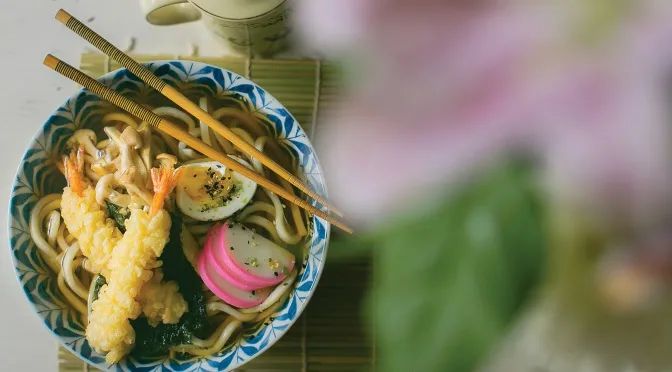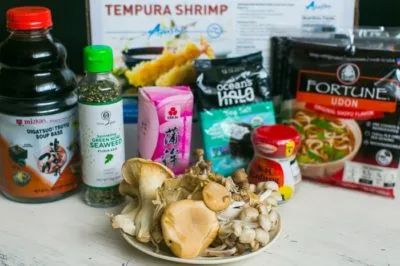
Udon at Home
Montana winters often seem to take up three of the four seasons, and I still hear talk of the infamous June snowstorm that rudely interrupted a precious summer some years ago.When the cold mountain air sinks down into town and chills the bones of those of us who live here, I often find myself in a conflicted state of being chilly and lazy. The cold air keeps me in my warm home, but it also creates a powerful hankering for a comforting heap of warm, inviting noodles bathed in brackish, bold broth. You know the one: Udon.
I suppose I could brave the bite of the icy air, drive my frigid car to one of our fine restaurants, and pay a little more than I want to for a bowl of this delicious comfort food. But leaving my warm house would defeat the purpose of a bowl of hot, noodly goodness on a frosty Montana day. Perhaps I could make it at home…
Udon (うどん) is a Japanese comfort dish made of thick, wheat-flour noodles similar to Italian pasta, but much thicker. These billowy noodles are swathed in savory dashi broth or sometimes a more mildly flavored broth called kakejiru. Kakejiru, a soup-base composed of Hondashi seasoning, soy sauce, and mirin, is often just referred to as “noodle broth” as it is frequently served with many other types of Japanese noodles including somen and soba noodles.
 Udon soup is usually topped with thinly chopped green onions that give it a dual taste/visual kick. Other toppings can include tempura (shrimp is my favorite), thin, half-moon slices of fish cake called kamaboko, thick-cut sections of boiled egg, seaweed, sauteed mushrooms, or furikake (a seaweed with sesame sprinkles). Depending on your mood, you can combine two or more of these delightful toppings to bring even more life to your Udon creation.
Udon soup is usually topped with thinly chopped green onions that give it a dual taste/visual kick. Other toppings can include tempura (shrimp is my favorite), thin, half-moon slices of fish cake called kamaboko, thick-cut sections of boiled egg, seaweed, sauteed mushrooms, or furikake (a seaweed with sesame sprinkles). Depending on your mood, you can combine two or more of these delightful toppings to bring even more life to your Udon creation.
You can take a shortcut (which is always welcome on cold, Montana days) and use a seasoning packet that often comes with Udon noodles, then season it with some Hondashi and Japanese soup base to get an authentic flavor. For toppings, stock your comfy quarters with frozen tempura and kamaboko from Seafood of the World, which is quite reasonably priced. The local Amaya Asian and World Market store carries Hondashi, furikake, and dried Udon noodles that fit quite well into anyone’s pantry. I recommend a few packs of noodles to start, as you will undoubtedly find that you have a new favorite. Make your own mix of toppings to suit your taste.
You won’t use all of your Udon noodle stash all in one sitting. You'll easily feed four people with your Udon reserves. So, whether you want to quell the chill in your bones, or enjoy a delicious change-of-pace on a lazy summer afternoon, make a quick trip to the pantry, and you can easily treat your family to the gift of restaurant-quality Udon within the comfort of your own home.
Itadakimasu いただきます!!! (Let’s eat!)
article and photos by Erin James
Originally printed in the pages of Simply Family Magazine’s January 2019 issue.
Check out the digital edition, here!
